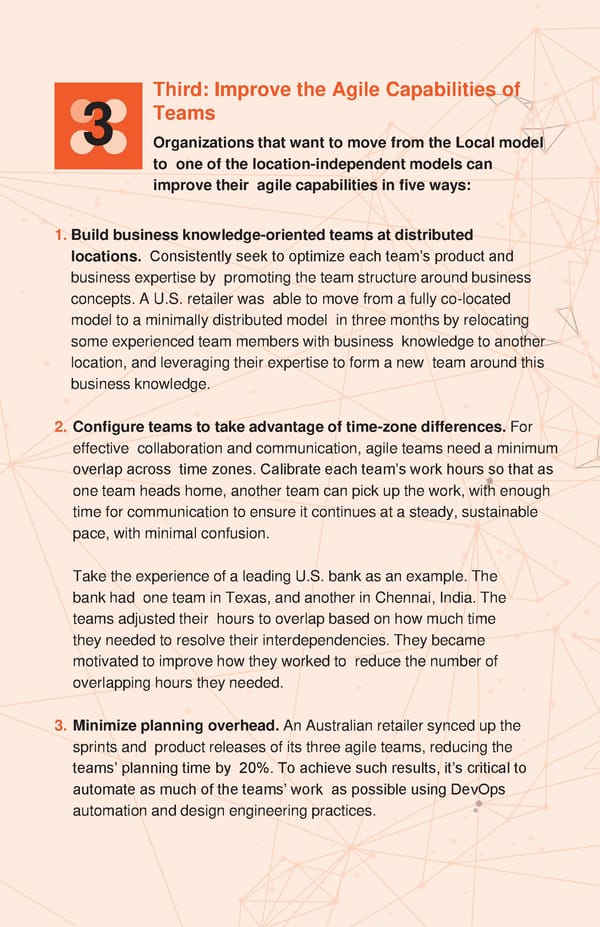Third: Improve the Agile Capabilities of 3 Teams Organizations that want to move from the Local model to one of the location-independent models can improve their agile capabilities in five ways: 1. Build business knowledge-oriented teams at distributed locations. Consistently seek to optimize each team’s product and business expertise by promoting the team structure around business concepts. A U.S. retailer was able to move from a fully co-located model to a minimally distributed model in three months by relocating some experienced team members with business knowledge to another location, and leveraging their expertise to form a new team around this business knowledge. 2. Configure teams to take advantage of time-zone differences. For effective collaboration and communication, agile teams need a minimum overlap across time zones. Calibrate each team’s work hours so that as one team heads home, another team can pick up the work, with enough time for communication to ensure it continues at a steady, sustainable pace, with minimal confusion. Take the experience of a leading U.S. bank as an example. The bank had one team in Texas, and another in Chennai, India. The teams adjusted their hours to overlap based on how much time they needed to resolve their interdependencies. They became motivated to improve how they worked to reduce the number of overlapping hours they needed. 3. Minimize planning overhead. An Australian retailer synced up the sprints and product releases of its three agile teams, reducing the teams’ planning time by 20%. To achieve such results, it’s critical to automate as much of the teams’ work as possible using DevOps automation and design engineering practices.
 Successfully Implementing Location-Independent Agile Teams Page 4 Page 6
Successfully Implementing Location-Independent Agile Teams Page 4 Page 6